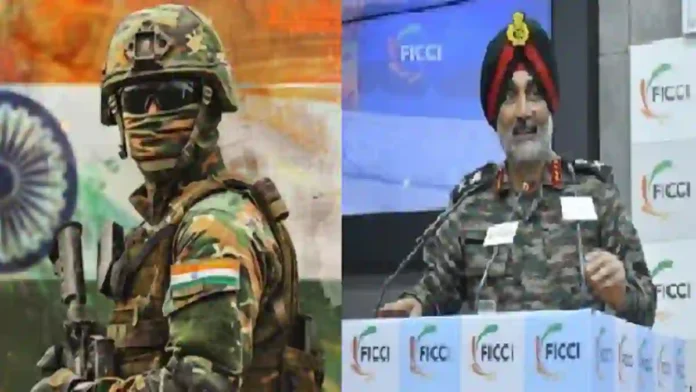The Indian Army has unveiled a comprehensive and ambitious modernisation roadmap that aims to transform its operational capabilities across multiple domains, positioning itself for the challenges of next-generation warfare. Announced by Lt Gen Amardeep Singh Aujla, Master General Sustenance, during the “New Age Military Technologies: Industry Capabilities & Way Forward” conference organised by FICCI, the plan places a strong emphasis on collaboration between the military, industry, and policymakers to drive innovation and self-reliance in defence technology.
At the heart of this roadmap is the development of ultra-fast, highly manoeuvrable weapon systems, such as hypersonic glide vehicles, hypersonic air-breathing engines (HEBs), and advanced fourth, fifth, and sixth-generation missiles.
These systems are intended to fundamentally change the deterrence equation and provide a significant technological edge. The Army is also shifting from conventional “dump category” ammunition to smart, precision-guided munitions (PGMs), aiming for enhanced strike capabilities with reduced collateral damage.
The modernisation strategy includes heavy investment in loitering munitions and the integration of directed energy weapons, such as high-energy lasers and microwave systems, to bolster counter-drone, missile defence, and anti-satellite operations. Recognising the evolving nature of warfare, the Army is prioritising cyber and electronic warfare capabilities to achieve spectrum dominance and robust cyber defence, with a call for industry partnerships to develop next-generation cyber tools, autonomous electronic warfare solutions, and resilient satellite systems.
A key pillar of the roadmap is soldier-centric modernisation. Plans are underway to equip soldiers with exoskeletons, human augmentation systems, smart body armour, and augmented reality-based battlefield management systems. The integration of AI-powered helmets, smart apparel, and real-time health monitoring devices is expected to enhance individual agility, resilience, and endurance, making each soldier more effective on the battlefield.
Read- Operation Sindoor: Lessons, Strategy, And The Triple Threat: Deputy Chief of Army Staff
To support these advancements, the Army is revamping its logistics and supply chain infrastructure by incorporating artificial intelligence, machine learning, blockchain, and the Internet of Things (IoT). The objective is to create green, sustainable, cyber-resilient, and efficient supply chains that are future-ready.
Lt Gen Aujla highlighted the importance of synergy among the military, policymakers, and industry. The military must clearly define operational needs, policymakers are tasked with creating enabling frameworks, and industry must innovate and deliver tailored solutions. He called for the establishment of defence technology acceleration funds, streamlined regulatory clearances, simplified procurement processes, and the creation of tech hubs and innovation centres to foster a vibrant defence innovation ecosystem.
Lt Gen Aujla cautioned that without a supportive environment and genuine collaboration, the goal of self-reliance (Atmanirbharta) would remain unfulfilled. He stressed that the Army will focus on its core operational roles while outsourcing specialised capabilities to industry partners, ensuring that India is positioned as a leader in modern warfare technologies.
Based On ANI Report
Agencies




